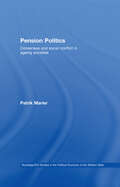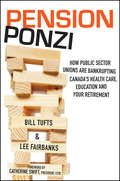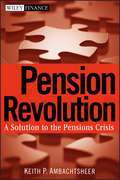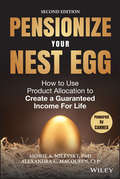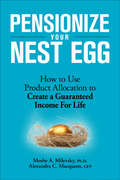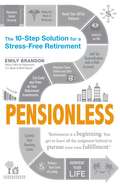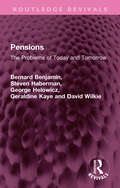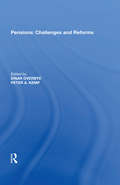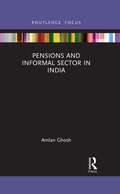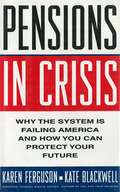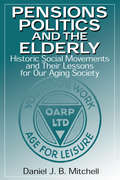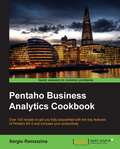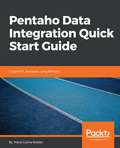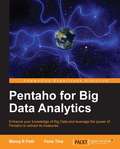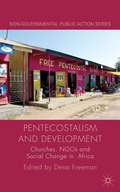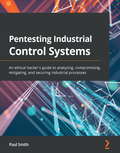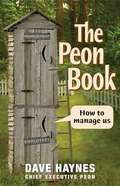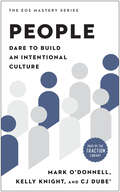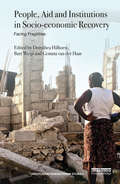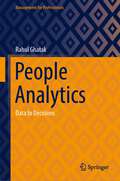- Table View
- List View
Pension Policy at the Boots Co. PLC
by Luis M. Viceira Akiko M. MitsuiIn early 2000, the trustees of the pension scheme at Boots considered a proposal to move 100% of the pension assets into a bond portfolio, which would be passively managed. The Boots Co. PLC was a leading retailer of cosmetics and toiletries in the United Kingdom, and the company pension scheme was one of the largest in the country, with 2.3 billion British pounds in assets. If implemented, Boots would depart significantly from its prior pension investment strategy, which had been similar to that of other large U.K. pension funds. In general, such funds used external managers for active and passive portfolios of roughly 75% equities, 17% bonds, 4% real estate, and 4% cash. This unprecedented investment policy change would more closely align pension assets and liabilities and, according to long-standing academic principles of corporate pension fund management, it might also have significant effects on Boots itself, its shareholders, and other stakeholders. In making their decision, the trustees would have to consider these effects as well as the practical feasibility of such a plan.
Pension Politics: Consensus and Social Conflict in Ageing Societies (Routledge Studies in the Political Economy of the Welfare State)
by Patrik MarierPopulation ageing and slower economic growth have raised serious questions about the willingness and ability of governments to maintain current social policies. Within this new reality, discussions on the future of public pensions have been predominant in political debates across Europe. This book explains why certain countries have been able to radically transform their pension system while others have simply altered parameters. To answer this question an extensive comparative analysis, including more than 60 interviews, was conducted in Belgium, France, Sweden and the UK. This empirical data provides an interesting contrast between reforms. Parametric reforms have stemmed from the creation of pension administrations outside the traditional state apparatus in France and Belgium and the resulting inclusion of social partners; while the state administrations of Sweden and the UK where debates have been internalised have led to programmatic reforms. Two controversial findings of this book include an explanation for the lack of influence on the part of the labour movement in the 1994/98 Swedish reform and a rejection of arguments claiming that policy change will be minimal with coalition governments. Finally the conclusion seeks to extend the applicability of the model to other industrialized countries. This book will be of interest to students and scholars of public policy, specifically social policy, political economy, the welfare state and comparative politics.
Pension Ponzi: How Public Sector Unions are Bankrupting Canada's Health Care, Education and Your Retirement
by Bill Tufts Lee FairbanksThe vast majority of Canadians are blissfully unaware that every man, woman and child in Canada now owes a $35,000 share of government debt and must pay this back, with interest! Make no mistake, this debt will change our country and affect every single Canadian in the decades to come. You may think you have planned for your retirement and are safe, but the government must find a way to recover this borrowed money, and they can only do that by raising your taxes and reducing your hard-earned benefits. How did this debt come about, and why can't we simply pay it off? Pension Ponzi lays the blame squarely at the feet of the politicians who refused to stand up to Canada's public sector unions. The fact is Canada's public sector, which accounts for 20% of the workforce, has been grossly overpaid relative to their counterparts in the private sector with cushy pensions paid for with your taxes and new debt. There is no denying that the country does not have the financial resources to ensure that the next generation of Canadians will have the same standard of living as the ones before it-or to support our growing seniors population. Meeting our public sector pension obligations will break the current social safety net that is a pillar of the Canadian way. Can you escape this bleak future? Can you afford to live longer? Nationally-recognized pension expert Bill Tufts and award-winning journalist Lee Fairbanks explore how this catastrophe came about and then suggest ways that government can fix what's broken, and how you as an individual can protect yourself from the financial calamity that is about to engulf Canada.
Pension Reform in India
by Hira SadhakChanging population dynamics have challenged the socio-economic stability of nations globally. This has brought into focus pension reform as one of the most critical socio-economic-political agendas. Against this background, this book gives a comprehensive account of the Indian pension system and the ongoing reforms. Pension Reform in India discusses the current National Pension System (NPS) structure and architecture extensively and also throws light on the alternative old-age financial-security schemes available in the country. To enable a better understanding of the critical issues of the hour, the author provides insights into pension reforms in many emerging-economy countries. Drawing upon his years of experience in this field and also from exhaustive research of data and publications of international agencies and eminent scholars, the author proposes methods for designing a pension system that is both viable and robust.
Pension Regimes and Saving
by G. A. Mackenzie Philip Gerson Alfredo Cuevas#"September 1997. "#Includes bibliographical references (p. ).
Pension Revolution
by Keith P. AmbachtsheerPraise for Pension Revolution"When Keith Ambachtsheer puts his keen mind to work on a problem, watch out! Here he exposes today's fragile arrangements for the most serious social dilemma of our times--financing retirement. Then he provides a compelling and powerful set of solutions. His writings are essential reading for all who care about the future of American living standards."--Peter Bernstein, founder and President, Peter L. Bernstein, Inc., and author of Capital Ideas and Against the Gods"This book describes one of the most ingenious inventions in the history of mankind: pension funds offering credible promises about old-age income. It reads like a thriller: how can well-governed pension funds be created in an imperfect world in which mortals wrestle with foibles and moral shortcomings? One of the world's leading experts on pensions searches for the answer--and finds it."--Lans Bovenberg, Scientific Director, Network for Studies on Pensions, Aging, and Retirement, Tilburg University, The Netherlands"Pension Revolution exposes the inadequacies of current pension systems and persuasively makes the case for the fundamental changes that are needed. It is essential reading for both the pension industry and policymakers."--Elizabeth Bryan, Chair, Investment Committee, Unisuper Management PM Ltd, Australia"Most analyses of complicated issues deal with complexity by simplifying or only looking at one piece-part, and, in doing so, provide limited value. In stark contrast, Keith Ambachtsheer boldly wades into the complexity in Pension Revolution to come up with a valuable integrative solution. He is a most welcome revolutionary!"--Roger Martin, Dean, Joseph L. Rotman School of Management, University of Toronto, Canada"We have known Keith for over ten years, and consistently over that time, he has constructively and comprehensively challenged conventional wisdom. He has done this so effectively that many of his initial thoughts have now become universally accepted norms. Such is his energy however that he continues to push the boundaries of pension and investment thinking."--Peter Moon, Chief Investment Officer, Universities Superannuation Scheme Ltd, UK"Pension Revolution not only explains the shortcomings of the existing pension system and the underlying design features that have resulted in the current pension upheaval. It also offers thoughtful and creative suggestions for prospective pension design. A must-read for anyone interested in the future of retirement finance."--James Poterba, Professor of Economics, Massachusetts Institute of Technology and a member of the TIAA-CREF Board of Trustees
Pensionize Your Nest Egg
by Moshe A. Milevsky Alexandra C. MacqueenPensionize Verb. 1. To convert money into income you can't outlive. 2. To create your own personal pension, a monthly income that lasts for the rest of your natural life.With the subpar performance of the markets, record-high personal debt levels, and shockingly low savings rates, it's clear that many Canadians expecting to retire in the next decade simply don't have a sufficient nest egg to ensure a worry-free retirement. Making matters worse, only about one-third of Canadians currently belong to a formal, or registered, pension plan; and even a large number of that "lucky third" will not retire with a guaranteed pension income.If you no longer have the time to wait and hope for your traditional investments to pay off, the answer is to "pensionize your nest egg" using the new technique of product allocation set out in this book. Pensionize Your Nest Egg explains how toRecognize if you really have a pension or just a tax-sheltered savings plan.Become informed about the new risks you and your nest egg face in retirement and why asset allocation, despite its value in the accumulation stage of life, is not sufficient to protect you and your money.Measure your retirement sustainability quotient (RSQ) and your Financial Legacy Value (FLV)-then choose a retirement income plan on the Retirement Income Frontier.Understand how product allocation differs from asset allocation, how to allocate your nest egg across three product silos, and learn about the new financial products that are available to protect against the new risks you face.Follow a seven-step process to close your Pension Income Gap and convert your retirement savings into a secure stream of lifetime income.Whether you do it yourself or work with a financial advisor, Pensionize Your Nest Egg gives you a simple plan to create a guaranteed retirement income-for life.
Pensionize Your Nest Egg: How to Use Product Allocation to Create a Guaranteed Income for Life
by Moshe A. Milevsky Alexandra C. MacqueenPensionize Verb. 1. To convert money into income you can't outlive. 2. To create your own personal pension, a monthly income that lasts for the rest of your natural life. With the subpar performance of the markets, record-high personal debt levels, and shockingly low savings rates, it's clear that many Canadians expecting to retire in the next decade simply don't have a sufficient nest egg to ensure a worry-free retirement. Making matters worse, only about one-third of Canadians currently belong to a formal, or registered, pension plan; and even a large number of that "lucky third" will not retire with a guaranteed pension income. If you no longer have the time to wait and hope for your traditional investments to pay off, the answer is to "pensionize your nest egg" using the new technique of product allocation set out in this book. Pensionize Your Nest Egg explains how to Recognize if you really have a pension or just a tax-sheltered savings plan. Become informed about the new risks you and your nest egg face in retirement and why asset allocation, despite its value in the accumulation stage of life, is not sufficient to protect you and your money. Measure your retirement sustainability quotient (RSQ) and your Financial Legacy Value (FLV)-then choose a retirement income plan on the Retirement Income Frontier. Understand how product allocation differs from asset allocation, how to allocate your nest egg across three product silos, and learn about the new financial products that are available to protect against the new risks you face. Follow a seven-step process to close your Pension Income Gap and convert your retirement savings into a secure stream of lifetime income. Whether you do it yourself or work with a financial advisor, Pensionize Your Nest Egg gives you a simple plan to create a guaranteed retirement income-for life.
Pensionless
by Emily BrandonGet the most out of your retirement! If you're one of the millions of Americans without a pension plan, your retirement years might seem like a huge financial question mark. Pensionless, by U.S. News Senior Editor for Retirement Emily Brandon, addresses the retirement benefits that are available to you, how to use them correctly, and how to avoid potential pitfalls. Learn how to avoid surcharges on your Medicare benefits, how to increase Social Security and employer-sponsored benefits to help pay for retirement, and how to minimize costs and boost the value of your existing retirement benefits. And you'll learn how to tweak your lifestyle now so that you can live well in retirement without the security of a pension. Inside you'll find ideas on how to get more Social Security by claiming benefits twice, ways to minimize fees and avoid penalties on retirement accounts, and how to inflate 401(k) balances. Featuring an analysis of the significant changes made to Social Security in the recent federal budget, Pensionless will help you enjoy those retirement years you've worked so hard for.
Pensionless: The 10-Step Solution for a Stress-Free Retirement
by Emily Brandon<p>Get the most out of your retirement! <p>If you're one of the millions of Americans without a pension plan, your retirement years might seem like a huge financial question mark. Pensionless, by U.S. News Senior Editor for Retirement Emily Brandon, addresses the retirement benefits that are available to you, how to use them correctly, and how to avoid potential pitfalls. Learn how to avoid surcharges on your Medicare benefits, how to increase Social Security and employer-sponsored benefits to help pay for retirement, and how to minimize costs and boost the value of your existing retirement benefits. And you'll learn how to tweak your lifestyle now so that you can live well in retirement without the security of a pension. <p>Inside you'll find ideas on how to get more Social Security by claiming benefits twice, ways to minimize fees and avoid penalties on retirement accounts, and how to inflate 401(k) balances. Featuring an analysis of the significant changes made to Social Security in the recent federal budget, Pensionless will help you enjoy those retirement years you've worked so hard for.</p>
Pensions: The Problems of Today and Tomorrow (Routledge Revivals)
by Bernard Benjamin Steven Haberman George Helowicz Geraldine Kaye David WilkieDrawing on the authors’ extensive experience as actuaries, this work, originally published in 1987, provides a thorough examination of the problems which had arisen, and those that seemed likely to arise, with regard to both public and private pension funds at the time. It ranges in scope from the realities of individual plans and schemes devised by employers and employees to the management of pension funds and investment portfolios. The concept of socially responsible investment is discussed.Reliable statistical information on the health, age and occupation of the population is an important tool in planning pension schemes for both the public and private sectors, and this book includes a careful analysis of the available data, leading to many useful projections for the thirty to forty years which followed. Although the statistical information is derived from UK sources, the problems it relates to, and its analysis was applicable to pension planning in all developed countriesThe breadth of the authors’ approach, fully embracing the apprehension at the time about the demands of an increasingly ageing population and a partially unemployed workforce, would give this book added interest to a wide range of academics and professionals in financial institutions, government and the social services. Today it can be read in its historical context.
Pensions: Challenges And Reforms (International Studies On Social Security (fiss) Ser. #9)
by Einar OverbyeThroughout the developed world, public and private pension schemes face major challenges that are creating irresistible pressures for reform. Major structural changes in Latin America and in Central and Eastern Europe have led to particularly fierce pressure. Two member states of the European Union - Italy and Sweden - have introduced radical reform of their public pensions systems; controversial pension reforms have been proposed in France and Germany; and the British government has been widely criticized over its pension reforms and its 2002 white paper. This exceptional volume examines the challenges faced by pension schemes in the advanced economies and the reforms that have been introduced to tackle these challenges. A team of international contributors provides an up-to-date, invaluable analysis of different aspects of pension problems, prospects and reforms. The book incorporates cross-national chapters as well as a focus on individual countries including Belgium, Brazil, Colombia, Finland, Greece, Italy, Sweden, the UK and the USA.
Pensions and Informal Sector in India
by Amlan GhoshThis book deals with the pension of uncovered people in India, the informal or unorganized sector workers who contribute more than fifty percent of India’s total output. Until recently, these workers don’t get any old age security when they retire unlike those from the organized sector workers such as govt. employees or corporates. This book offers insights on the pension system of the informal sector in India. The book is the outcome of field research of two years and the field research was conducted on MSME sector (a sub sector of unorganised sector) which provides the knowledge about the present state of the unorganised sector workers in MSMEs, their financial condition and stress, their work participation, their awareness level of old age financial security or pension and their financial behaviour regarding pension savings in India. This book empirically demonstrates a relationship between financial literacy and willingness to save for retirement benefits among the informal sector workers in India. Access to banking also improves the probability of retirement savings along with the gender and education. By reading this book, readers can understand the demographic change India is going to witness within the next thirty years and its challenges to meet the longevity risk of these workers.
Pensions at Work
by Isla Carmichael Jack Quarter Sherida RyanPension funds have come to play an increasingly important role within the new economy. According to Statistics Canada, in 2006, trusteed pension funds in Canada had $836 billion of assets and represented the savings of 4.6 million Canadian workers. Pensions at Work is a unique collection of papers that uses a labour perspective to deal with the socially responsible investment of pension funds. Featuring leading Canadian and international scholars, it builds on existing scholarship on socially responsible investment and on the growing interest of the Canadian labour movement in joint trusteeship. What is unique about this collection is that it synthesizes three distinct themes - socially responsible investment, pension funds, and labour studies. The contributors address an array of critical issues such as gaps in the education of union trustees of pension funds, the impact of human capital criteria on shareholder returns, the influence of corporate engagement upon corporate performance, and the nature of public-private partnerships (PPPs). Although the essays in Pensions at Work all address the nexus between socially responsible investment, pension funds, and unions, each looks at a particular manifestation of that relationship through a different disciplinary lens. This collection moves the discussion to pension funds in which union representatives are also trustees, a relatively new approach that will be of great interest to institutional investors, the labour movement, and instructors in labour studies programs.
Pensions in Crisis: Why the System is Failing America and How You Can Protect Your Future
by Karen FergusonTelling readers what they need to know now to protect their pensions, two pension experts and reform advocates reveal the pitfalls in the system, ask disturbing questions, and offer valuable advice to protect retirement income.
Pensions, Politics and the Elderly: Historic Social Movements and Their Lessons for Our Aging Society
by Daniel J. MitchellThis is an historical exploration of the US pensioner movements of the late 1920s through to the early 1950s, and the insights they offer policy analysts and researchers on how the forthcoming retirement of the Baby-Boom generation could proceed.
Pentaho Business Analytics Cookbook
by Sergio RamazzinaThis practical guide contains a wide variety of recipes, taking you through all the topics you need to quickly familiarize yourself with Pentaho and extend your Pentaho skillset. If you are involved in daily activities using Pentaho Business Analytics platform, this is the book for you. It is a good companion to get you quickly acquainted with everything you need to increase your productivity with the platform. We assume basic familiarity with Pentaho, data warehouse design and SQL, HTML, and XML.
Pentaho Data Integration Quick Start Guide: Create ETL processes using Pentaho
by María Carina RoldánGet productive quickly with Pentaho Data IntegrationKey FeaturesTake away the pain of starting with a complex and powerful systemSimplify your data transformation and integration workExplore, transform, and validate your data with Pentaho Data IntegrationBook DescriptionPentaho Data Integration(PDI) is an intuitive and graphical environment packed with drag and drop design and powerful Extract-Transform-Load (ETL) capabilities. Given its power and flexibility, initial attempts to use the Pentaho Data Integration tool can be difficult or confusing. This book is the ideal solution.This book reduces your learning curve with PDI. It provides the guidance needed to make you productive, covering the main features of Pentaho Data Integration. It demonstrates the interactive features of the graphical designer, and takes you through the main ETL capabilities that the tool offers.By the end of the book, you will be able to use PDI for extracting, transforming, and loading the types of data you encounter on a daily basis.What you will learnDesign, preview and run transformations in SpoonRun transformations using the Pan utilityUnderstand how to obtain data from different types of files Connect to a database and explore it using the database explorerUnderstand how to transform data in a variety of waysUnderstand how to insert data into database tablesDesign and run jobs for sequencing tasks and sending emailsCombine the execution of jobs and transformationsWho this book is forThis book is for software developers, business intelligence analysts, and others involved or interested in developing ETL solutions, or more generally, doing any kind of data manipulation.
Pentaho for Big Data Analytics
by Feris Thia Manoj R PatilThe book is a practical guide, full of step-by-step examples that are easy to follow and implement.This book is for developers, system administrators, and business intelligence professionals looking to learn how to get more out of their data through Pentaho. In order to best engage with the examples, some knowledge of Java will be required.
Pentecostalism and Development
by Dena FreemanDevelopment was founded on the belief that religion was not important to development processes. The contributors call this assumption into question and explore the practical impacts of religion by looking at the developmental consequences of Pentecostal Christianity in Africa, and by contrasting Pentecostal and secular models of change.
Pentesting Industrial Control Systems: An ethical hacker's guide to analyzing, compromising, mitigating, and securing industrial processes
by Paul SmithDiscover modern tactics, techniques, and procedures for pentesting industrial control systemsKey FeaturesBecome well-versed with offensive ways of defending your industrial control systemsLearn about industrial network protocols, threat hunting, Active Directory compromises, SQL injection, and much moreBuild offensive and defensive skills to combat industrial cyber threatsBook DescriptionThe industrial cybersecurity domain has grown significantly in recent years. To completely secure critical infrastructure, red teams must be employed to continuously test and exploit the security integrity of a company's people, processes, and products. This pentesting book takes a slightly different approach than most by helping you to gain hands-on experience with equipment that you'll come across in the field. This will enable you to understand how industrial equipment interacts and operates within an operational environment.You'll start by getting to grips with the basics of industrial processes, and then see how to create and break the process, along with gathering open source intel to create a threat landscape for your potential customer. As you advance, you'll find out how to install and utilize offensive techniques used by professional hackers. Throughout the book, you'll explore industrial equipment, port and service discovery, pivoting, and much more, before finally launching attacks against systems in an industrial network.By the end of this penetration testing book, you'll not only understand how to analyze and navigate the intricacies of an industrial control system (ICS), but you'll also have developed essential offensive and defensive skills to proactively protect industrial networks from modern cyberattacks.What you will learnSet up a starter-kit ICS lab with both physical and virtual equipmentPerform open source intel-gathering pre-engagement to help map your attack landscapeGet to grips with the Standard Operating Procedures (SOPs) for penetration testing on industrial equipmentUnderstand the principles of traffic spanning and the importance of listening to customer networksGain fundamental knowledge of ICS communicationConnect physical operational technology to engineering workstations and supervisory control and data acquisition (SCADA) softwareGet hands-on with directory scanning tools to map web-based SCADA solutionsWho this book is forIf you are an ethical hacker, penetration tester, automation engineer, or IT security professional looking to maintain and secure industrial networks from adversaries, this book is for you. A basic understanding of cybersecurity and recent cyber events will help you get the most out of this book.
The Peon Book
by David HaynesManagement books are traditionally written by industry "experts": scholars, consultants, senior managers. They're writing about how to manage workers, but none of these experts really understands the viewpoint of the average worker, the regular grunt in the trenches-the peon. Peons are the ones affected when a manager decides to manage-in-one-minute, to move somebody's cheese, to try that fifth discipline. Rather than consult some expert, why not go to the source, and ask the peons? Who better to teach you how to train a dog than the dog himself? And who better to tell you how to manage than one of those who are being managed? The Peon Book gives managers the perspective they've been lacking. Author and self-proclaimed Chief Executive Peon Dave Haynes' sole, powerful source of expertise is that he has been managed in different companies and in different industries, and he knows what worked-and what failed catastrophically. In irreverent, straight-talking terms, Haynes tells managers what they really need to do to make their employees motivated, committed, and productive-and it's not memorizing yet another "technique" or "strategy" or "discipline." Haynes writes in a common sense, easy-to-read style that is both witty and wise. Every boss can benefit, and every employee can empathize with the words in The Peon Book. "The inability to empathize can be a real speed bump on the road to a trusting, personal relationship with your employees. So how are you supposed to show more empathy? I take issue with management books that give you a phrase to say to show empathy like 'I understand,' or 'I know what you mean,' or that say that by rephrasing a statement you can show empathy. Don't use some coined phrase to show empathy, just mentally put yourself in our shoes. Sometimes it's just a matter of remembering what it's like to have to get all those reports turned in on a Friday. Or remembering what it's like to have to ask for time off. Or remembering what it's like to be the new guy on the job, and have a hard time remembering everything. Do you see the key concept I'm getting at? Empathy = remembering. Who said you'd never use math in the real world?"
People: Dare to Build an Intentional Culture (The EOS Mastery Series)
by Mark O'Donnell Kelly Knight CJ DuBe'Master the People Component of your business by building an intentional culture with the Entrepreneurial Operating System (EOS).The second installment of the Traction Library&’s EOS Mastery Series, People gives readers all the tools they need to create a thriving workplace culture and shows why it&’s an absolutely essential part of any successful business.Hit-or-miss hiring, flagging productivity, infighting, employees in positions not suited to their strengths, or an inability to attract and retain good candidates are just some of the symptoms of a haphazard company. And they won&’t go away on their own—you have to have the courage to build an intentional culture.Using the proven EOS heart-centered leadership approach, readers will learn how to:Identify and implement your company&’s Core ValuesAdopt healthy cultural habits without overcomplicating thingsAttract, hire, and retain the right peopleCreating an intentional culture isn&’t optional—it&’s crucial to ensuring the future of your business and improving the quality of your life. People will teach entrepreneurs how to get their employees on board and on the same page for a culture overhaul.
People, Aid and Institutions in Socio-economic Recovery: Facing Fragilities (Routledge Humanitarian Studies)
by Dorothea Hilhorst Bart Weijs Gemma Van Der HaarAn estimated 2 billion people live in countries affected by fragility, conflict and violence. Extreme poverty is increasingly concentrated in these areas, and governments and international agencies seek avenues to enable socio-economic recovery and to support people as they try to rebuild their lives and livelihoods. People, Aid and Institutions in Socio-economic Recovery: Facing Fragilities provides an in-depth understanding of people’s strategies in the face of conflict and disaster-related fragility and examines how policies and aid interventions enable their socio-economic recovery – or fail to do so. Through field-based research, the book captures the complex and unfolding realities on the ground, exploring the interfaces between economic, social and institutional change. This provides a rich and unique vantage point from which to reflect on the impact of recovery policies. The book provides a set of cross-cutting findings that aim to inform policy and practice. The detailed case studies of the book lay bare key dynamics of recovery. Set against the findings from two chapters that review the literature, the cases provide evidence-based lessons for socio-economic recovery. The chapters combine qualitative and quantitative methodologies and form a valuable resource to researchers and postgraduate students of disaster management, conflict, humanitarian aid and social reconstruction, and development management.
People Analytics: Data to Decisions (Management for Professionals)
by Rahul GhatakThis book is an exploration of the people analytics possibility, bringing out both theoretical frameworks and detailed practical case studies from the author's experience in industry and business across both sides of the table, with an understanding of data science models and SMAC (Social, Mobile & Cloud) technologies underpinning it. It further explores and lays out a business case for why organizations need to invest behind this space and why HR functions and businesses need to embrace and adopt it. The book examines how people analytics makes a difference to business, describes stages of adoption and maturity models for its effective deployment in organizations and explores the journey from employee master data management and conversion to reporting and visualizations to dash-boarding and descriptive analytics, operational analytics to finally predictive modelling. The book provides insights on the impact of big data and social networks on HR and talent frameworks and the opportunity for HR to mine these networks with a view to culling out predictive insights for the business. It also describes in great detail the specific applications of people and talent analytics through case examples. The book discusses and makes the case for HR to be metric driven focused on business outcomes. It enumerates upon “lead” and “lag” indicators and the need to leverage relevant measurement systems. It provides an understanding of relevant statistical tools that could be deployed to mine key insights from the data to enable robust decision-making, and examines the power of “visual intelligence” and data representation that goes beyond traditional tools like Excel. This book is for HR practitioners who seek to challenge the status quo. It does so by helping them leverage a data and evidence based approach; asking the right questions and building new capabilities with a view towards leading change and driving transformation both in their domain, the wider business and the larger organization. The book is also useful for HRM students to gain a deep understanding of “people analytics” as a critical sub-domain within HR. “HR is not just about people but now also about Tech, Data and Analytics. Upgrading numerical/analytics skills in order to have greater impact on the business, is the new wave of HR, which Rahul helps address via his own rich experience.”- Gurprriet Siingh, Managing Director, Russell Reynolds Associates, Mumbai, India. “This book would help HR & Leadership Teams find a way of discarding perceptions and uncovering truth by embracing data patterns as opposed to just continuing with incremental changes to how it has always been. This is particularly so of successful organizations.”- Vikas Gupta, Divisional Chief Executive Officer, Education and Stationery Products Business, ITC Limited, Gurugram, India.

